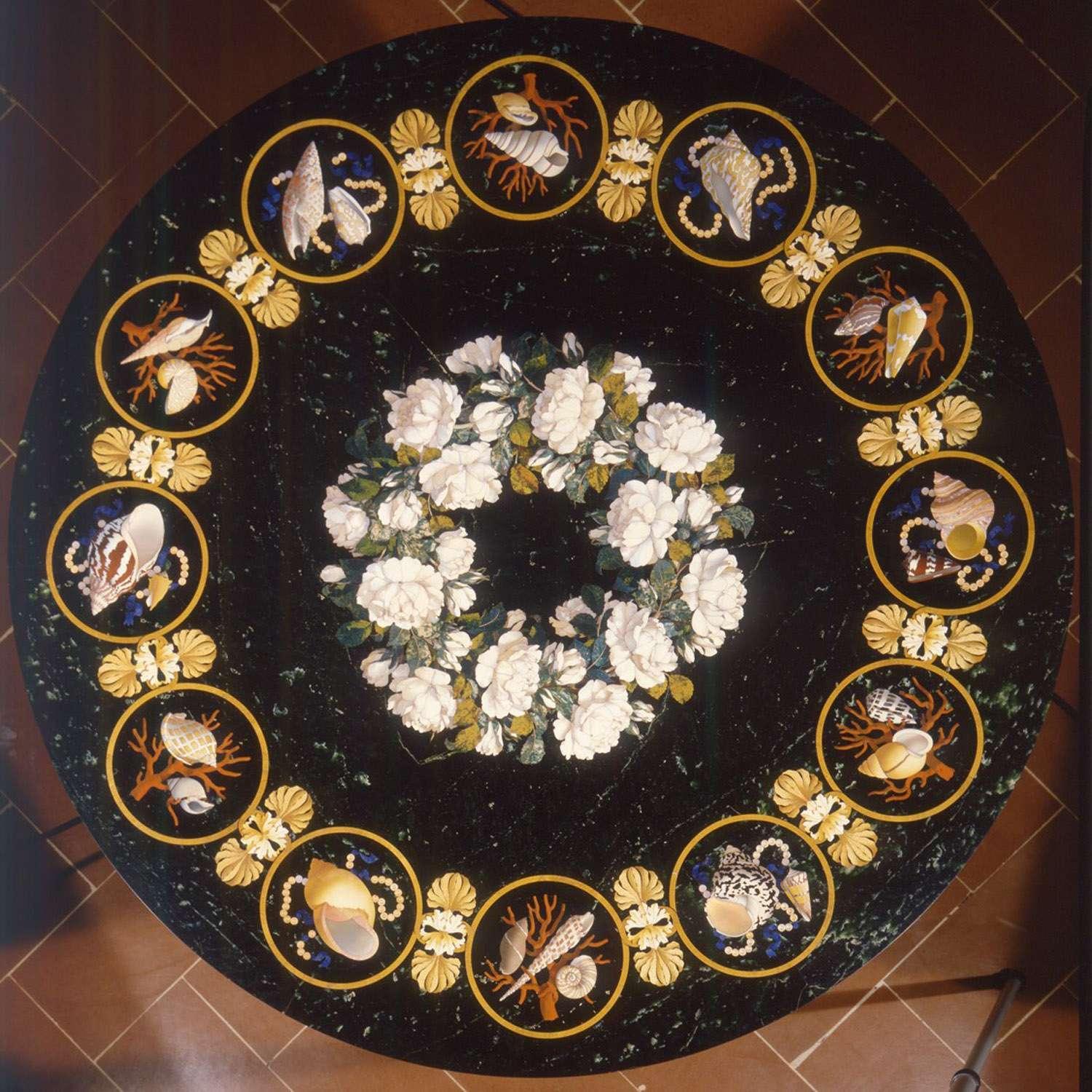This tabletop can be considered as an example of the stylistic transition of this period. It was made in 1853 with Egyptian nephrite, with a central wreath of white roses in chalcedony of Volterra and agate of the Sabine area, surrounded by 12 medallions with shells, corals and pearls in jaspers, agates and polychrome chalcedonies. Marine decorations belong to the neoclassical taste, and were in vogue until the first decades of the nineteenth century. The vibrant naturalism of the wreath of roses anticipates the flowery exuberance of the artefacts made during the 1860s and 1870s. During the Restoration period, the interest for floral themes, which had already a great success during the seventeenth century, increased gradually. However, the meticulous precision of the previous period was lost, leading rather towards a higher degree of pictorial naturalism, as we can see here, in which the flower petals look real, as though one could almost touch them.

